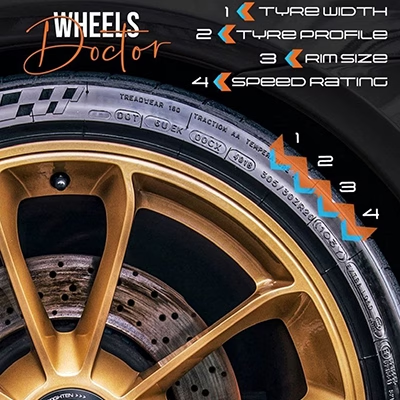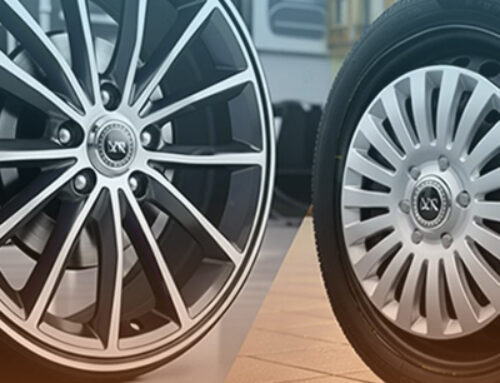How to Choose the Right Tire Size for Your Vehicle
Choosing the correct tire size is critical for maintaining your vehicle’s safety, performance, and efficiency. Installing the wrong size can lead to poor handling, increased fuel consumption, mechanical issues, and even void your warranty.
In this article, we’ll guide you step-by-step through how to choose tire size to help you make the best decision for your car, SUV, or truck.
Why Is It Important to Choose the Correct Tire Size?
Selecting the right tire size directly impacts your vehicle’s:
-
Handling and Stability: Properly sized tires ensure better grip, cornering, and braking performance.
-
Fuel Efficiency: Incorrect tire sizes can negatively affect fuel economy by increasing rolling resistance.
-
Mechanical Health: Oversized or undersized tires can strain suspension components and lead to premature wear.
-
Compliance and Warranty: Many manufacturers require using the recommended tire size to maintain warranty coverage and ensure legal compliance.
Understanding how to choose tire size can help you avoid these risks and keep your vehicle operating at its best.
Where Can You Find Your Vehicle’s Tire Size Information?
Before purchasing new tires, it’s important to know where to find the correct size:
-
Driver’s Side Door Frame: Look for a sticker or plate displaying recommended tire sizes.
-
Owner’s Manual: Your vehicle’s manual provides tire specifications and alternatives.
-
Current Tires: Check the sidewall of your current tires. You’ll find a sequence like “225/65R17,” which indicates important size details.
Knowing where to find this information is the first step in learning how to choose tire size effectively.
How to Read a Tire Size
Tire sizes might seem confusing at first, but they follow a standardized format. Here’s how to decode it:
For example, 225/65R17 breaks down as follows:
-
225: Tire width in millimeters.
-
65: Aspect ratio (height as a percentage of the width).
-
R: Radial construction.
-
17: Diameter of the wheel in inches.
Additionally, you might see other numbers and letters indicating the load index and speed rating, which are also important when determining how to properly.
Key Factors to Keep in Mind When Selecting a Tire Size
When selecting a tire size, it’s not just about matching numbers. Consider these factors:
-
Vehicle Type and Use: A sedan used for city driving will need different tires than an SUV used for off-roading.
-
Climate Conditions: Choose between all-season, summer, or winter tires based on your weather.
-
Changes in Tire Dimensions: If you alter the tire’s width or profile, it can affect clearance, handling, and the accuracy of your speedometer.
Learning how to choose tire size means understanding how these factors influence your driving experience.
Can You Change Your Tire Size?
Modifying tire size is possible under the right conditions:
-
Plus Sizing: Installing larger wheels with lower-profile tires to maintain overall diameter.
-
Minus Sizing: Using smaller wheels with higher-profile tires for better winter performance.
However, improper changes can:
-
Affect your speedometer reading.
-
Impact ride quality and safety.
-
Alter the distance traveled per tire rotation.
If you’re exploring how to choose tire size for upgrades, always consult a professional to ensure safety and compatibility.
Frequently Asked Questions
✅ What happens if I use a larger or smaller tire size?
➡️ Using incorrect sizes can affect handling, speedometer accuracy, and mechanical components.
✅ Is it better to stick with the manufacturer’s recommended size?
➡️ Yes, following manufacturer guidelines ensures optimal performance, safety, and warranty compliance.
✅ Does tire size affect fuel economy?
➡️ Absolutely. Larger, heavier tires may increase fuel consumption.
✅ Do I need new rims if I change tire size?
➡️ If the new tire size requires a different rim diameter, you’ll need new wheels.
✅ How does tire size impact ride comfort?
➡️ Low-profile tires offer a sportier feel but may reduce comfort compared to higher-profile tires.
Choosing the right tire size is essential for ensuring your vehicle’s safety, performance, and longevity.
By understanding how to choose tire size, checking official sources, and considering your specific needs, you can make an informed decision that benefits both your car and your driving experience.
When in doubt, always consult with tire professionals or refer to your vehicle’s manufacturer guidelines before making any changes.
Choosing the right tire size is crucial, but keeping your wheels in top condition is just as important for your vehicle’s safety and performance. If you want to go one step further in caring for your car, make sure to check out our complete guide: How Do You Inspect Wheels? It will help you understand the essential steps to keep your wheels properly maintained and spot potential issues early.






